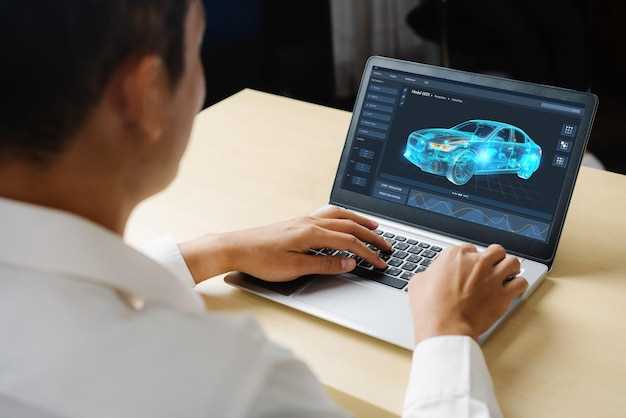
The automotive industry is undergoing a significant transformation, with software updates playing a pivotal role in enhancing vehicle performance and safety. Traditionally, vehicle updates required a visit to the dealership, leading to downtime and inconvenience for consumers. However, the emergence of Over-The-Air (OTA) systems has revolutionized this process, allowing manufacturers to deliver timely and efficient software updates directly to consumers’ vehicles.
These software updates are not merely enhancements; they ensure that vehicles are equipped with the latest features, improved algorithms, and vital security patches. As vehicles become more integrated with advanced technology, the need for regular updates has risen significantly. Consumers now expect that their vehicles will not only maintain current standards but also evolve throughout their ownership.
With the rise of connectivity and smart features in modern cars, the trend towards OTA updates is set to accelerate. This article will explore the latest trends in automotive software updates and OTA systems, examining how they impact user experience, vehicle maintenance, and the overall industry landscape.
Impact of Over-the-Air Updates on Vehicle Performance and Security

Over-the-air (OTA) updates have transformed the automotive industry by enabling manufacturers to remotely deliver software enhancements and critical security patches directly to vehicles. This innovation significantly boosts vehicle performance, ensuring that the software controlling various systems remains current and optimized.
One of the primary advantages of OTA updates is the seamless improvement of vehicle performance. Manufacturers can fine-tune engine management systems, enhance fuel efficiency, and even improve driving dynamics without requiring vehicle owners to visit a dealership. For instance, updates can recalibrate systems based on real-world driving data, leading to better handling and responsiveness.
Moreover, the ability to deploy software updates in real-time helps in maintaining a vehicle’s competitiveness in the market. As features become outdated, OTA updates allow manufacturers to introduce new functionalities, keeping the vehicle relevant and potentially increasing customer satisfaction.
In terms of security, OTA updates play a vital role in protecting vehicles from emerging threats. As vehicles become more connected, they face an increasing number of cyber threats. Regular software updates can patch vulnerabilities, ensuring that the vehicle’s electronic systems are shielded against attacks. This proactive approach to security is crucial in maintaining consumer trust and safety in an era where cyber threats are prevalent.
Furthermore, the efficiency of OTA updates reduces the burden on vehicle owners. Instead of dealing with potential recalls or scheduling service appointments, users can receive updates at their convenience, often while the vehicle is parked and connected to Wi-Fi. This not only enhances user experience but also keeps vehicles in optimal condition with minimal disruption.
In summary, the implementation of over-the-air updates represents a significant advancement in the automotive sector, positively impacting both vehicle performance and security. By ensuring that vehicles remain updated with the latest software, manufacturers can enhance functionality and safeguard against potential cyber threats.
Best Practices for Implementing OTA Software Update Systems
Implementing an over-the-air (OTA) software update system is essential for modern automotive applications. This technology enables manufacturers to enhance vehicle performance, add features, and improve security. Here are some best practices to consider:
- Robust Security Measures: Ensure that all updates are securely transmitted and authenticated. Use encryption protocols to safeguard against unauthorized access.
- Incremental Updates: Deploy smaller, incremental updates rather than large, comprehensive ones. This reduces the risk of failures and minimizes data usage.
- Reliable Rollback Mechanism: Implement a rollback feature that allows reverting to the previous software version in case of issues. This guarantees the vehicle remains operational even if an update fails.
- Thorough Testing: Conduct extensive testing in different scenarios and environments. Validate updates on various vehicle models to ensure compatibility and performance.
- User Notification System: Inform customers about upcoming updates, their benefits, and any required actions. Transparency helps build trust and enhances user experience.
- Feedback Mechanism: Allow users to provide feedback post-update. This can help identify issues promptly and tailor future updates to meet customer needs.
By adhering to these best practices, automotive manufacturers can create efficient and effective OTA software update systems that enhance vehicle functionality and customer satisfaction.
Future Trends in Automotive Software Management and User Experience

The automotive industry is undergoing a significant transformation with the integration of advanced software solutions that enhance vehicle performance and user experience. As vehicles become increasingly connected, the management of software updates will play a crucial role in maintaining vehicle functionality and security. Future trends indicate a shift towards more streamlined and user-friendly approaches to software updates, enabling customers to enjoy the latest features without hassle.
One prominent trend is the emergence of intelligent update systems that leverage artificial intelligence and machine learning. These systems will analyze driving patterns and vehicle performance data to determine the most suitable time for deploying updates. By optimizing the timing of software updates, manufacturers can minimize disruptions for users while ensuring vehicles operate at peak performance.
Another critical development is the emphasis on user-centric design in software interfaces. Automakers are increasingly prioritizing intuitive interfaces that enhance the driving experience. This includes personalized dashboards and seamless integration of applications that allow users to control various vehicle functions effortlessly. As over-the-air (OTA) software delivery improves, users can expect frequent updates that enhance their overall driving experience, making vehicles more responsive to individual preferences.
Moreover, cybersecurity will remain a pivotal concern in automotive software management. As vehicles become more connected, the threat of cyberattacks grows. Future software updates will incorporate advanced security protocols to protect user data and vehicle integrity. Manufacturers will focus on transparent communication with customers about security updates, ensuring users feel confident in the safety of their vehicles.
Finally, the trend of collaboration among automotive companies, technology firms, and third-party developers will continue to thrive. This ecosystem will foster innovation, allowing for rapid development and deployment of new software features. By leveraging external expertise, automakers can create more robust software solutions that enhance vehicle functionality and enrich the user experience.





